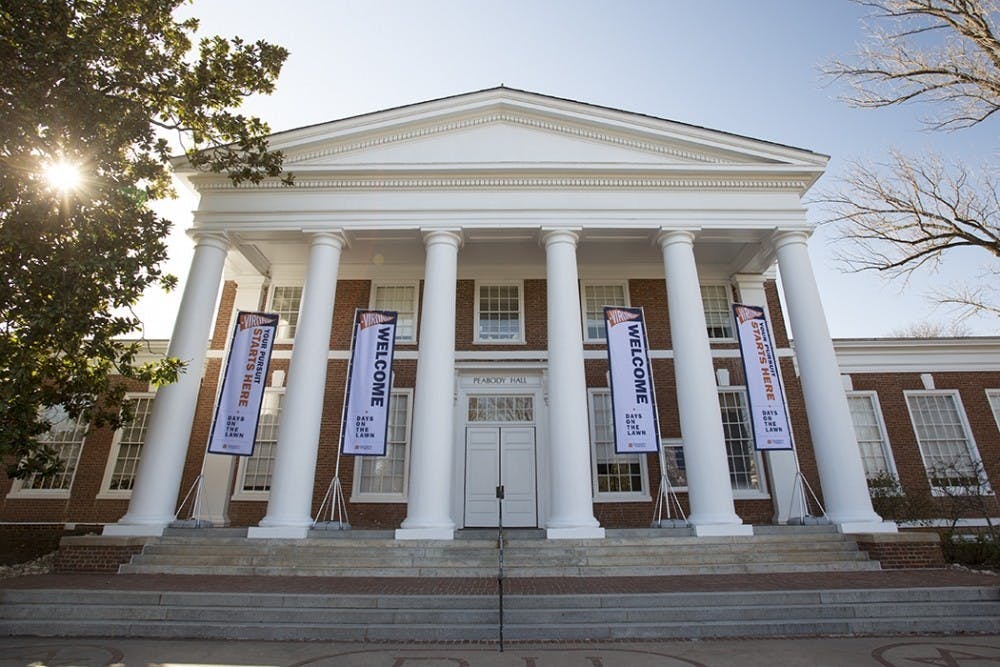The University received 2,157 early decision applications for the Class of 2024, according to the Office of Admission. Of the 2,157 students, preliminary numbers suggest about 54 percent are from Virginia.
The University announced in May that it would re-institute its binding early decision application option for the first time since 2006 — allowing students who have decided that U.Va. is their first choice to apply by Oct. 15, before the early action deadline of Nov. 1 and regular decision deadline of Jan. 1. The Oct. 15 early decision deadline is the earliest permissible deadline by the National Association for College Admission Counseling’s Statement of Principles of Good Practice.
This year, the University expects around 40,000 applicants after receiving a record-breaking 40,869 applications last year. In 2006 — the last year offering early decision — the University saw 2,410 students apply early decision out of a total of 16,000 applicants. Of early decision applicants, 973 students were offered admission, making up approximately 16 percent of admitted students in 2006, with an acceptance rate of 40.4 percent. The overall acceptance rate in 2006 was 37 percent.
Last year, the University accepted 26 percent of early action applicants and 24 percent of regular decision applicants. According to Dean of Undergraduate Admissions Gregory Roberts, applications are reviewed with the same process and regarded with the same standard, regardless of when students choose to submit their application.
When early decision was last implemented at the University from the 1960s to 2006, about 30 percent of enrolled students applied via early decision. In 2006, when the University announced it would remove early decision, former University President John T. Casteen III said the action was “an effort to remove an identified barrier to qualified low-income students and their families who have long believed that top-tier universities were not within their reach.”
Early decision application policies faced criticism in the past about how the binding option may disproportionately favor students who come from wealthy backgrounds and do not need to compare the financial aid packages of different universities. Of the 947 students admitted through early decision in 2005, fewer than 20 applied for financial aid, and only one student qualified for the University’s maximum financial aid package.
The University utilizes a variety of tools to reach out to low-income students in the recruitment process. Deputy University Spokesperson Wes Hester pointed to partnerships with organizations such as the College Advising Corps in Virginia and the College Bound Initiative as ways the University reaches out to first-generation students and low-income families in the recruitment process.
“The University’s recruitment programs to urban and rural areas of the country … allow U.Va. to connect with high-achieving, low-income students and spread a message of access, affordability and inclusion,” Hester said.
In a previous interview with The Cavalier Daily, Roberts said that “all discussions that took place considered the potential impact on economically disadvantaged and underrepresented students.”
“Since UVA meets 100% of financial need to [all] applicants regardless of the plan they choose, we can make our best aid offer to students with financial need in ED,” Roberts added.
Roberts declined a request for additional comment.
Decisions to admit, defer or deny early decision applicants will be released in mid-December. Non-binding early action will remain an option for students, with applications due on Nov. 1, and regular decision applications due Jan. 1.
The University joins a handful of other public universities that offer a binding early decision option, including The College of William and Mary and Virginia Tech. Approximately 34 percent of the College of William and Mary and 15 percent of Virginia Tech’s class of 2023 were accepted through early decision.
“There's no ‘easier’ time to apply to U.Va.,” Associate Dean of Admissions Jeannine Lalonde wrote on her admissions blog. “There's definitely a better time for you to give us an application, though. You need to submit when you can present your best application.”







